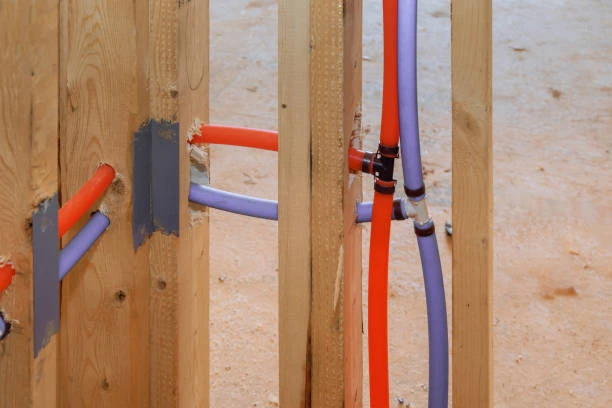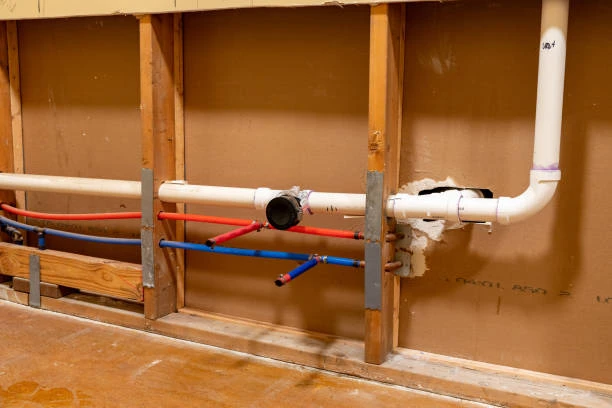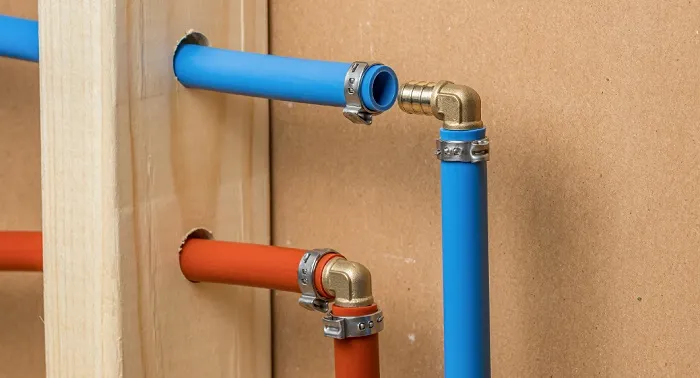When winter rolls around, the festive season brings joy, but it also brings challenges, especially regarding your home’s plumbing. One of the most critical aspects to consider is ensuring your water lines are prepared to handle the colder temperatures. This is where insulated PEX water lines come into play. Let’s explore why these lines are essential during the winter holidays and how they can safeguard your plumbing system.
What is PEX?
Understanding PEX
PEX, or cross-linked polyethylene, is a type of flexible plastic piping used for water supply lines. It’s a popular choice in modern plumbing due to its durability, flexibility, and resistance to scale and chlorine. Unlike traditional piping materials, PEX is less prone to bursting in freezing temperatures, making it an excellent option for winter.
Benefits of PEX
- Flexibility: PEX can bend and twist, allowing it to fit into tight spaces without the need for joints or fittings.
- Resistance to Corrosion: Unlike metal pipes, PEX does not corrode, ensuring a longer lifespan.
- Easy Installation: PEX is lightweight and easy to install, which can save on labor costs.
Why Insulation Matters
The Importance of Insulation
Insulating your PEX water lines is crucial during winter. Insulation helps maintain water temperature and prevents freezing. When the temperatures drop, uninsulated pipes are at risk of freezing and bursting, leading to costly repairs and water damage.
Energy Efficiency
Insulated pipes not only prevent freezing but also improve energy efficiency. By maintaining the temperature of the water, your heating system doesn’t have to work as hard, which can save you money on your energy bills during the holidays.
The Risks of Uninsulated Pipes
Frozen Pipes
PEX pipes are vulnerable to freezing, which can lead to bursting. This scenario is especially troublesome during the holiday season when homes are filled with guests and the last thing you want is a plumbing emergency.
Water Damage
A burst pipe can cause significant water damage to your home, leading to costly repairs. Insulating your PEX lines can help mitigate this risk.
How Insulated PEX Water Lines Work
Insulation Materials
Typically, insulation materials like foam sleeves or fiberglass are used to wrap PEX pipes. These materials help keep the heat in and the cold out, protecting your water supply.
Installation Process
Installing insulated PEX lines can be straightforward. Here’s a quick guide:
- Choose the Right Insulation: Select an appropriate insulation material for your PEX pipes.
- Measure and Cut: Measure the lengths of PEX that need insulation and cut the insulation material accordingly.
- Wrap the Pipes: Securely wrap the insulation around the PEX lines, ensuring there are no gaps.
- Seal the Edges: Use duct tape or another adhesive to seal the edges of the insulation.
Best Practices for Maintaining PEX Lines in Winter
Regular Inspections
Before the winter season begins, inspect your PEX water lines for any signs of wear or damage. Look for cracks or any sections that may need additional insulation.
Maintain Indoor Temperature
Keeping your home at a consistent temperature is crucial. If you plan to be away during the holidays, set your thermostat to a minimum temperature to prevent freezing.
Draining Outdoor Lines
For outdoor faucets and hoses, consider draining them before the cold weather sets in. This step can prevent any residual water from freezing and causing damage.

The Cost-Effectiveness of Insulated PEX
Initial Investment vs. Long-Term Savings
While the upfront cost of insulating your PEX lines might seem significant, the long-term savings on energy bills and potential water damage repairs can make it a wise investment.
Home Value Increase
Having insulated water lines can also add value to your home. Buyers appreciate the low-maintenance and durable features of a well-maintained plumbing system.
Conclusion
Preparing your home for winter is essential, especially when it comes to your plumbing. Insulated PEX water lines offer a reliable solution to prevent freezing and bursting, ensuring your holidays are filled with joy rather than plumbing woes. By investing in insulated PEX lines, you not only protect your home but also enhance your overall comfort and energy efficiency.
FAQs
1. What is PEX and why is it used for plumbing?
PEX Pipes are flexible, durable piping material resistant to corrosion and ideal for both hot and cold water supply lines.
2. How does insulation help PEX water lines in winter?
Insulation helps maintain water temperature and prevents freezing, reducing the risk of burst pipes and water damage.
3. What are the best materials for insulating PEX pipes?
Common materials for insulating PEX pipes include foam sleeves and fiberglass insulation.
4. Can I install insulated PEX lines myself?
Yes, installing insulated PEX lines can be a DIY project if you follow the proper steps and safety guidelines.
5. How often should I inspect my PEX lines?
It’s recommended to inspect your PEX lines at least once a year, especially before winter, to identify any potential issues.


















